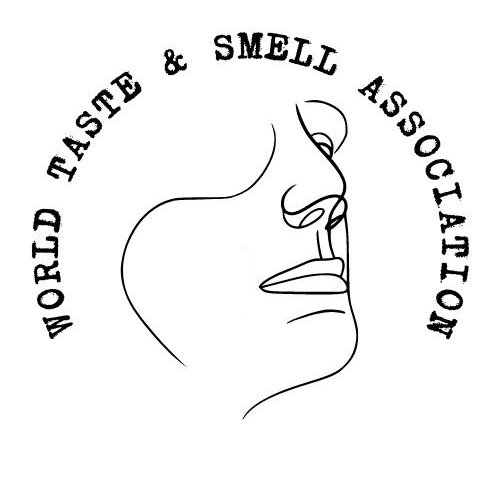Awaken Your Senses: The Science and Practice of Smell Training
by Mindy Yang
Smell training is a science-backed method that can help people with smell loss or dysfunction regain olfactory function. It’s also a powerful tool for anyone seeking to enhance their ability to smell. Having spent decades designing professional training programs for global brands like Moët Hennessy and leaders in beauty and fragrance, I’ve witnessed the transformative power of sensory training—not just for recovery, but for personal and professional growth in industries like fragrance, luxury, and hospitality.
One key to sustaining any training routine is habit stacking. This behavioral psychology technique pairs new habits with existing routines, making them easier to maintain. By applying habit stacking to smell training, you can seamlessly integrate it into your day, turning it into a rewarding ritual rather than a chore.
The Science Behind Smell Training
Smell training leverages the brain’s neuroplasticity—its ability to rewire itself through consistent stimulation. Research highlights its effectiveness:
• Repetition is Key: A 2009 study by Dr. Thomas Hummel showed that twice-daily smell training over 12 weeks led to measurable improvements in olfactory function for some individuals with smell loss.
• Familiarity Matters: Reigniting olfactory pathways is more effective with scents that were once familiar or personally meaningful.
Beyond recovery, smell training can heighten sensory awareness, improve mood, and evoke memory. Since smell is deeply tied to the limbic system—the brain’s center for emotion and memory—it’s a powerful tool for enriching daily life.
Why Habit Stacking Works for Smell Training
Habit stacking builds on existing routines, using them as cues to start your smell training. For example, you might pair it with brushing your teeth in the morning or preparing evening tea. This approach eliminates the need to carve out extra time, making the practice feel natural and sustainable.
How to Begin Your Smell Training Journey
1. Anchor Smell Training to a Daily Habit
Attach smell training to an activity you already do consistently:
• Morning: After brushing your teeth or making coffee.
• Afternoon: During a lunch break or after a walk.
• Evening: After your skincare routine or before bedtime.
Example: “After brushing my teeth in the morning, I’ll spend two minutes focusing on the scent of orange and lavender essential oils.”
2. Choose a Variety of Scents Thoughtfully
• Select familiar scents that evoke strong associations, as these help create meaningful sensory connections.
• Everyday items like fresh citrus peels, herbs, spices, or lightly scented tea can be effective.
• Pair scents with activities: for example, use a lemon slice while preparing breakfast or chamomile tea during your evening routine.
3. Keep a Journal
• Record your daily sessions, noting the scents you use and any observations about their intensity or emotional impact.
• Track progress over time—do certain smells evoke memories or become more distinct?
• Journaling can be motivating on days when progress feels slow, reminding you that small changes add up.
4. Commit to 28 Days and Beyond
• Smell training requires patience and consistency. While some improvements may appear in weeks, meaningful changes often take longer.
• Expect variability—some days scents may seem stronger, weaker, or distorted. This is normal and part of the process.
5. Recognize Recovery
• Recovery is unique to each individual. Progress might mean enjoying the scent of fresh coffee or flowers again, or confidently identifying odors at home or work.
Expert Tips for Smell Training Success
• Stay Encouraged: Progress may be slow, and setbacks are normal. Celebrate small victories as they come.
• Engage Fully: Focus on each scent’s characteristics—sweet, sharp, fresh—and explore the details.
• Pair Smell and Taste: Sniff mint leaves while sipping mint tea to deepen the sensory experience.
• Avoid Overexposure: Train twice daily to prevent sensory fatigue.
Rediscovering the Joy of Scent
Smell training isn’t just about recovery—it’s about reconnecting with life’s simple pleasures. From the aroma of fresh bread to the scent of blooming flowers, it enhances the experiences that make life rich and meaningful.
If You’re Training Toward Olfactory Recovery
Recovery is a deeply personal journey that varies widely. Here are some ways to support your progress:
Build a Support Network
• Join Support Groups: Online or local groups provide encouragement and shared experiences.
• Consult Healthcare Professionals: Share your progress with a specialist who may offer additional guidance.
• Engage Trusted Friends: Share your journey with someone who can provide encouragement.
Embrace the Process
• Understand that recovery isn’t linear—there will be highs and lows.
• Remember, clinical trials and organizations are working tirelessly to advance research and treatments. Stay informed by subscribing to resources like this one- on tasteandsmell.org.
Your Path to Rediscovering Scent
Smell training requires patience, commitment, and self-compassion. Whether you’re recovering from anosmia or seeking to heighten sensory awareness, the World Taste & Smell Association is here to support you. Together, let’s reconnect with the scents that make life beautiful.
Smell is a gift—let’s train it together.
References
1. Hummel T., et al. (2009). Effects of olfactory training in patients with olfactory loss. Laryngoscope.
2. Damm M., et al. (2021). Olfactory training in smell disorders: A systematic review and meta-analysis. Rhinology.
3. Lally P., et al. (2010). How are habits formed: Modelling habit formation in the real world. European Journal of Social Psychology.
